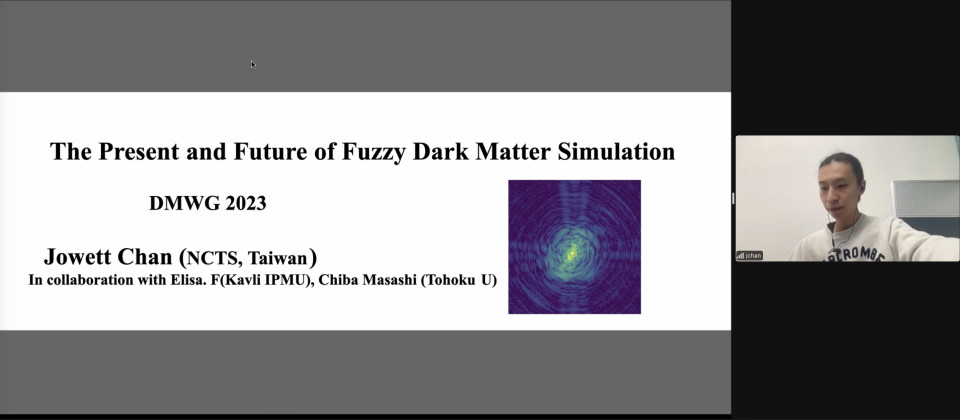DMWG Seminar by Dr. Jowett Chan on February 9, 2023
Dark matter (DM) of our Universe could be categorized into three types: cold DM (CDM), warm DM (WDM), or fuzzy DM (FDM) depending on its mass. CDM is the most well-studied one with its success in large-scale structure formations. However, as studies proceed, some problems arise in such models: observations of small-structure would not match the predictions of CDM structures in simulations. For example, observations of Milky Way satellites indicate the existence of the central core while simulations predict cuspy structures at the center. The feature could be well-described by considering FDM of m~O(1e-20) eV or below.
The unique point of FDM is that the mass of the particle becomes a unique parameter for calculation. In numerical simulations of FDM halos, we can see the formation of cores in the Hubble time (i.e. the age of the Universe) and relaxations of radial structures. As the test particle mass gets larger, core-formation time becomes longer.
One possible caveat for FDM models is the so-called "diversity problem". Our satellite galaxies show diversity in their core structures, while FDM predicts a single scale for core size which is determined by the particle mass. It can be understood by considering non-linear processes of mergers, the diversity could be generated. Mergers could also be responsible for structures at outer radii, such as the density profile proportional to the inverse cubic of the radius.
In order to overcome the numerical difficulties and proceed, GPU-accelerated adaptive mesh code is now being intensively invented. We should see fantastic structures of FDM halos in the near future!
Reported by Nagisa Hiroshima

